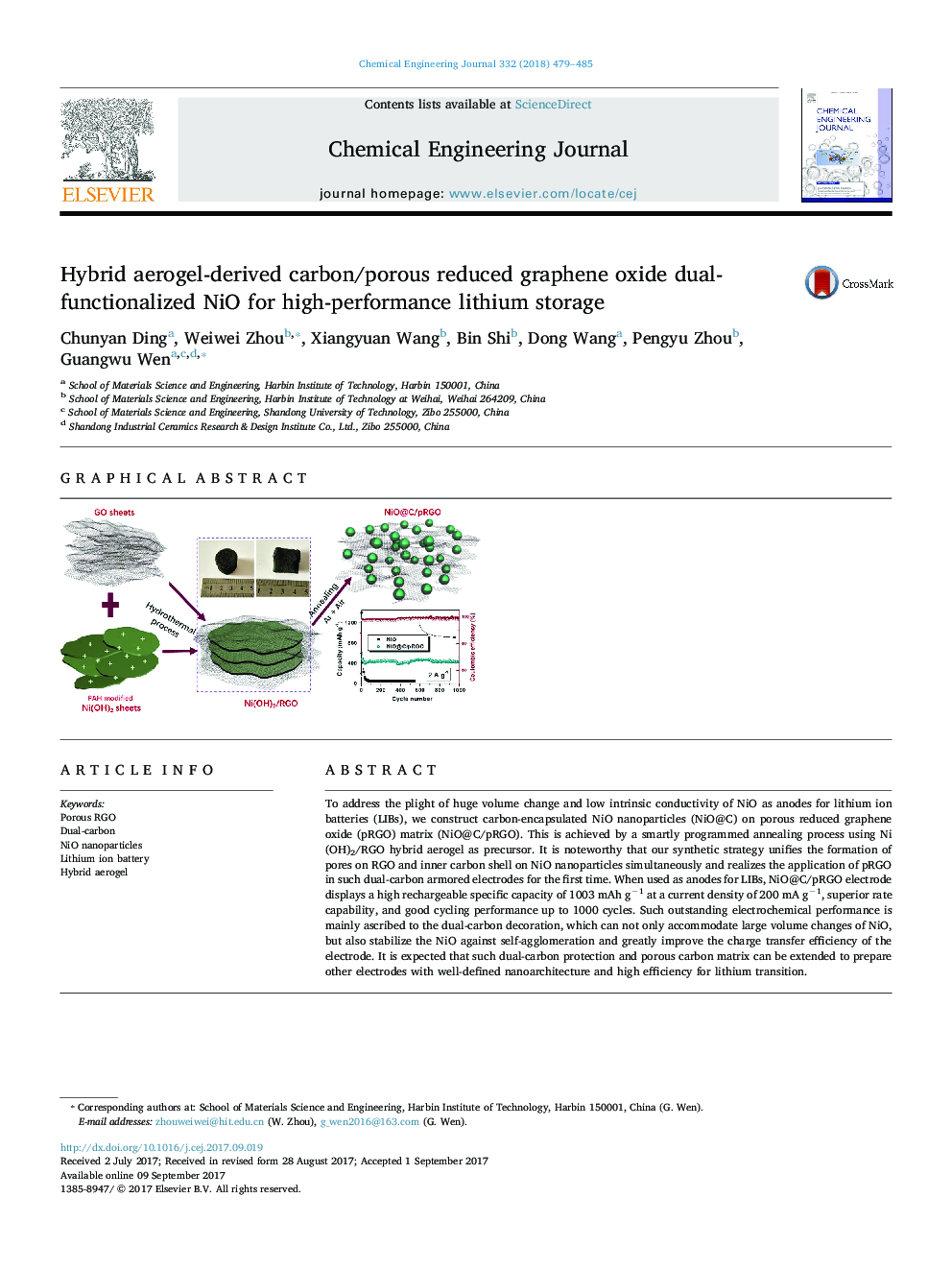| Article ID | Journal | Published Year | Pages | File Type |
|---|---|---|---|---|
| 6464996 | Chemical Engineering Journal | 2018 | 7 Pages |
â¢Dual-carbon structure formed concurrently was decorated on NiO nanoparticles.â¢Porous RGO was chosen as the dual-carbon matrix for the first time.â¢RGO was verified to be the main carbon source of the conformal carbon shell.â¢Double catalysis functions of metallic Ni was proved to be pivotal.
To address the plight of huge volume change and low intrinsic conductivity of NiO as anodes for lithium ion batteries (LIBs), we construct carbon-encapsulated NiO nanoparticles (NiO@C) on porous reduced graphene oxide (pRGO) matrix (NiO@C/pRGO). This is achieved by a smartly programmed annealing process using Ni(OH)2/RGO hybrid aerogel as precursor. It is noteworthy that our synthetic strategy unifies the formation of pores on RGO and inner carbon shell on NiO nanoparticles simultaneously and realizes the application of pRGO in such dual-carbon armored electrodes for the first time. When used as anodes for LIBs, NiO@C/pRGO electrode displays a high rechargeable specific capacity of 1003 mAh gâ1 at a current density of 200 mA gâ1, superior rate capability, and good cycling performance up to 1000 cycles. Such outstanding electrochemical performance is mainly ascribed to the dual-carbon decoration, which can not only accommodate large volume changes of NiO, but also stabilize the NiO against self-agglomeration and greatly improve the charge transfer efficiency of the electrode. It is expected that such dual-carbon protection and porous carbon matrix can be extended to prepare other electrodes with well-defined nanoarchitecture and high efficiency for lithium transition.
Graphical abstractDownload high-res image (116KB)Download full-size image
